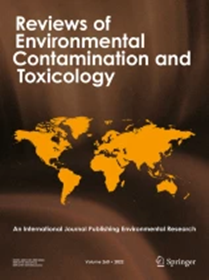含全氟辛烷磺酸固体废物的国际管理实践与处理技术综述
IF 6.6
3区 环境科学与生态学
Q1 ENVIRONMENTAL SCIENCES
Reviews of environmental contamination and toxicology
Pub Date : 2023-10-10
DOI:10.1007/s44169-023-00049-7
引用次数: 0
摘要
《斯德哥尔摩公约》将全氟辛烷磺酸及其盐类列为持久性有机污染物,以限制其在全世界的使用。倾倒固体废物释放的全氟辛烷磺酸可能对人类和环境构成风险。在查明、管理和处置含全氟辛烷磺酸的固体废物方面作出了巨大努力。本文通过对相关文献和法规的梳理,对含全氟辛烷磺酸固体废物的国际管理实践和处理技术进行了综述。首先介绍了全氟辛烷磺酸在固体废物和环境中的存在和归宿,以及固体废物中全氟辛烷磺酸检测方法的发展。然后,对不同国家和地区的相关法规进行了回顾和比较。必须根据经济和污染情况制定具体可行的全氟辛烷磺酸控制法规和标准。焚烧、填埋等传统处理技术仍是处理含全氟辛烷磺酸固体废物的主流方法。然而,一些创新和有前途的技术,包括热解、等离子体、水泥窑共处理和阴燃,引起了人们的关注。不同技术的处置效率、成本效率和环境影响仍然不确定,值得更多的考虑。此外,还简要介绍了替代研究。根据国际经验,对加强处置技术研究、防止处置过程中的二次污染、积极开发安全替代方案等方面的前景进行了总结。本文章由计算机程序翻译,如有差异,请以英文原文为准。
A Review of the International Management Practice and Treatment Technology of Solid Waste Containing Perfluorooctane Sulfonic Acid
Perfluorooctane sulfonic acid (PFOS) and its salts were listed as persistent organic pollutants (POPs) in the Stockholm Convention to restrict their worldwide usage. PFOS released from dumped solid waste may pose risks to humans and the environment. Great efforts have been made to identify, manage, and dispose of PFOS-containing solid wastes. Herein, we reviewed the relevant literature and regulations to give a complete view of international management practices and treatment technologies for PFOS-containing solid wastes. First, the occurrence and fate of PFOS in solid waste and in the environment, as well as the development of detection methods for PFOS in solid wastes are introduced. Then, relevant regulations from different countries and regions are reviewed and compared. Specific and feasible PFOS control regulations and standards must be developed based on the economic and pollution situations. Traditional disposal technologies such as incineration and landfill are still the mainstream methods for PFOS-containing solid wastes. However, several innovative and promising technologies, including pyrolysis, plasma, cement kiln co-treatment, and smoldering, have raised concern. The disposal efficiency, cost efficiency, and environmental impact of different technologies remain uncertain and deserve greater consideration. In addition, alternative research is briefly introduced. Based on the international experience, prospects for enhancing disposal technology research, preventing secondary pollution during disposal, and proactively developing safe alternatives are made for a summary.
求助全文
通过发布文献求助,成功后即可免费获取论文全文。
去求助
来源期刊
CiteScore
12.80
自引率
0.00%
发文量
11
审稿时长
>24 weeks
期刊介绍:
Reviews of Environmental Contamination and Toxicology publishes reviews pertaining to the sources, transport, fate and effects of contaminants in the environment. The journal provides a place for the publication of critical reviews of the current knowledge and understanding of environmental sciences in order to provide insight into contaminant pathways, fate and behavior in environmental compartments and the possible consequences of their presence, with multidisciplinary contributions from the fields of analytical chemistry, biochemistry, biology, ecology, molecular and cellular biology (in an environmental context), and human, wildlife and environmental toxicology.
•Standing on a 55+ year history of publishing environmental toxicology reviews
•Now publishing in journal format boasting rigorous review and expanded editorial board
•Publishing home for extensive environmental reviews dealing with sources, transport, fate and effect of contaminants
•Through Springer Compact agreements, authors from participating institutions can publish Open Choice at no cost to the authors

 求助内容:
求助内容: 应助结果提醒方式:
应助结果提醒方式:


